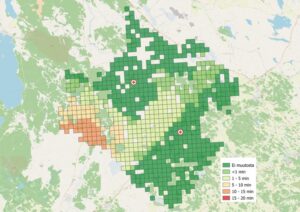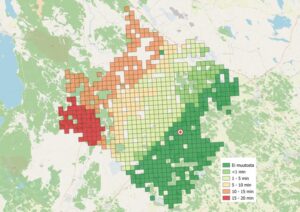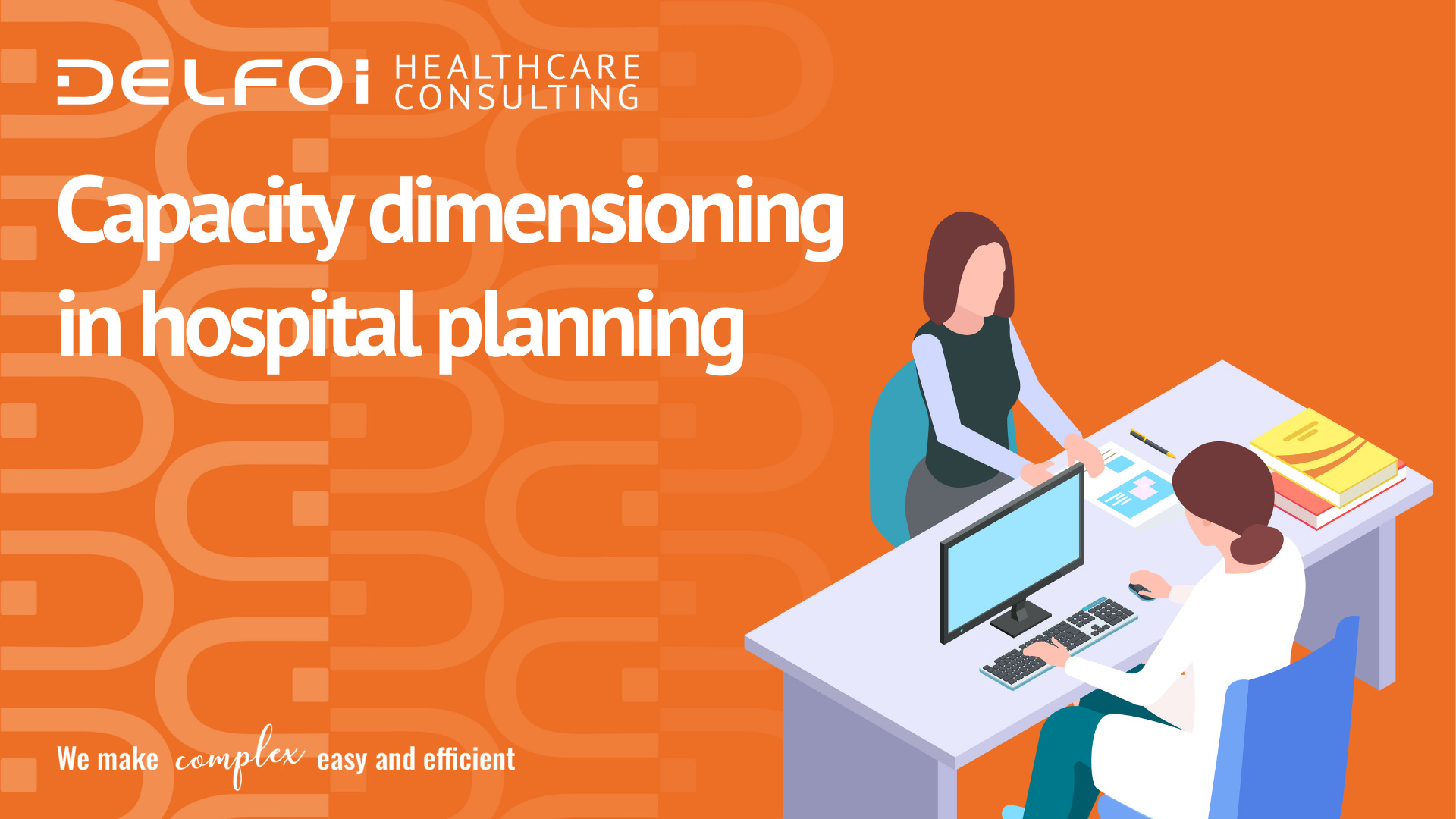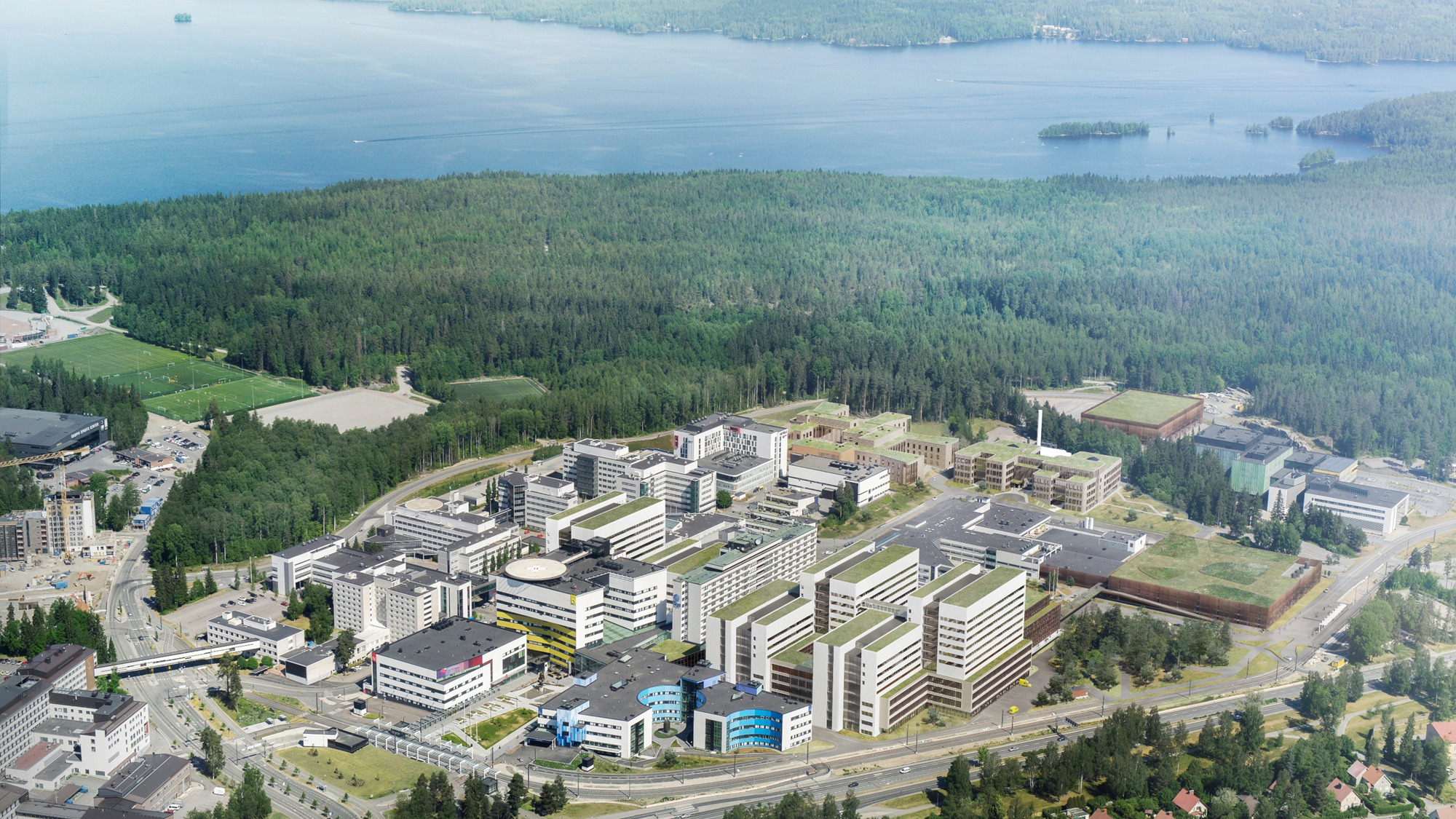Service network planning
-
- Hospital design and conceptualisation of operational models
- Simulation of service processes and logistics
- Service network planning
- Project management support and change management
- Streamlining and optimising care processes and patient flows
- Performance analysis, service forecasting and knowledge management
- Delfoi Planner for Healthcare
- References
- Latest

Analyses of the healthcare service networks help to choose the optimal option. The analysis must consider a wide range of both operational and geospatial aspects in order to provide social and health services to the customer in the most efficient way in terms of accessibility and cost.
The availability of services and their cost-effective production will play a significant role in the future of healthcare services. This underlines the fact that the cost structure of social- and healthcare services cannot remain unchanged and that the healthcare service network must be renewed. The core of the network studies is therefore to examine the differences between decentralisation and centralisation of services and to compare the different options in terms of functionality and costs. In network analysis, the operational perspective is complemented by geospatial analytics:
- Accessibility of sites/buildings for customers
- Availability of personnel in the region
- Logistics and transport costs
- Potential customer/patient numbers in different locations
- Environmental impact and sustainability of policy options

Network analysis and geospatial analytics
One of the most important issues for operational development and long-term planning is the organisation’s location network. Delfoi’s long experience in operational analysis and development includes the analysis and modelling of healthcare service networks. These analyses significantly improve the quality of decision-making.
An analysis assignment may aim to answer core questions such as:
- What kind of network will best enable the long-term implementation of strategic objectives?
- What operational and economic impact can be achieved by changing the network?
- What is the best approach within the given network structure?
- How should transport routes and schedules be optimally organised?
Why and when?
Long-term planning of the healthcare service network can be triggered by, for example, the introduction of new ways of working or new concepts, a cost-efficiency project, anticipated changes in demand for services or products, the need to renovate premises, or changes in customs or tax practices.
When healthcare centres or hospitals merge, there is a need to assess how different operations are organised and where they are located. In organisations that provide consumer products or services, digitalisation is an attempt to provide a service to the customer through an electronic channel, which means that the network often has to change. The logistics and manufacturing chains for capital goods are often long, so the development of the network focuses on logistics, local partnerships, and the geographical location of customers. In networks of social services, customer accessibility, operational efficiency, premises costs and human resources are often the main considerations in the assessment. Rapidly changing operations therefore require a new systematic approach to network decisions. There is a need for services from the state, municipalities, and counties, but the shrinking tax base requires the development of operations and the consolidation of facilities, which may also mean shared facilities with partners.
Instead of minimising the cost of space, the focus of network development should be on the overall cost-effectiveness of operations, service ability, and long-term effects:
- A poorly prepared network decision can, at worst, lock premises in sub-optimal locations for decades, prevent development and drive away customers.
- Good preparation, on the other hand, will enable the network to develop in the long term in a direction that will make it possible to implement the strategy. Good preparation also involves careful consideration of alternative scenarios and assessment of the operational and financial implications.


How is the healthcare service network analysis carried out?
Delfoi’s experts work with the client to draw up a work plan for each network analysis, so that the work can be carried out efficiently and effectively. As an independent external expert, we ensure that the analysis includes the relevant assessment items and that all options are evaluated objectively – using verified current facts, future modelling, and simulations.
A network analysis typically includes the following main steps: defining objectives, describing and analysing the current situation, defining scenarios, collecting and validating data, modelling and comparing scenarios, drawing conclusions, and reporting.
In describing the current situation and defining scenarios, the involvement of the client’s management and experts is emphasised in the form of workshops, site visits and process mapping work. The definition of objectives may include, for example, the identification of the maximum allowable changes in facility costs, operational costs, accessibility, or travel time. A maximum target investment budget for the network can also be set for the period under review.
The analytical parts are carried out using modern methods at our disposal, including geospatial analytics, simulation, optimisation and surveys of stakeholders and customers. Data collection will be based on historical planning data and more detailed information from both public sources and the client’s core business information systems. Data will be supplemented by measurements and observations where necessary.
The simulation allows a detailed analysis of the resources (space, equipment, personnel) needed to produce services and products in different locations. For example, the potential economies of scale of a larger production unit size can be objectively calculated in this way. Based on the modelled number of premises, real estate cost experts and facility data specialists from the customer side or from Delfoi’s partner network can determine at a rough level the rental cost of, for example, a new premises, a light renovation, or a space that needs to be heavily converted. Read more about simulation.
Geospatial analytics plays a key role in the overall optimisation of the network. It can be used to determine the accessibility of locations for different customer segments in comparable scenarios. For example, location analytics can be used to examine how much a customer’s transport or self-drive would change if the number of branches were reduced and some of them were relocated. As a benchmark, analytics can also be used to create a completely new network option from scratch, optimised for the selected parameters. Geospatial analytics can also be used to model transport times and distances and to calculate transport and logistics costs. The availability of personnel or proximity to partners can also be calculated in a common way using analytics.
Results and conclusions are summarised in a visually illustrative format, and detailed assumptions and analyses are transparently documented in a format useful to the client.
What should the service network of the future look like and what benefits can be achieved by analysing the healthcare service networks?




